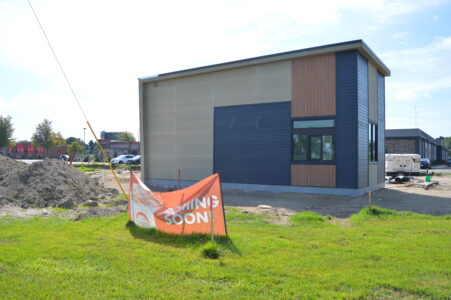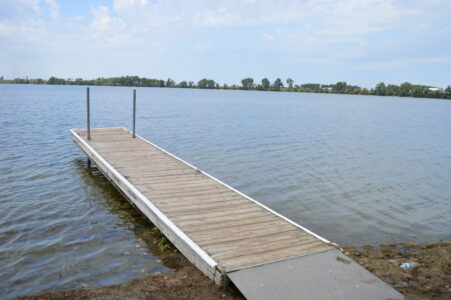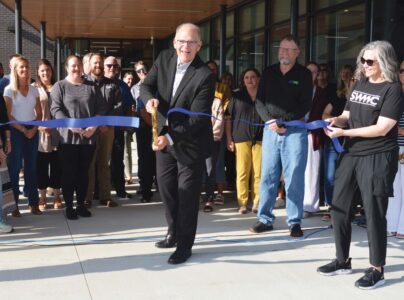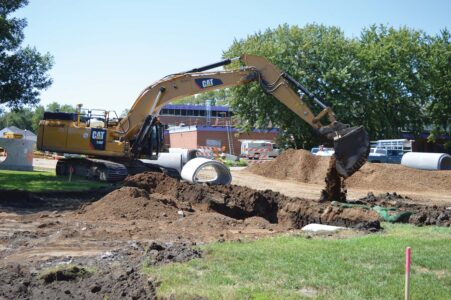Not all area lakes make the grade
DNR tool lets public look up the health of Minnesota lakes

An online tool for exploring Minnesota lakes gave West Twin Lake near Florence a health grade of B, for factors like water quality and the health of lake plants. Several other area lakes – including some popular destinations like Lake Shetek – received lower grades. Impairments like high levels of phosphorus and other nutrients affect a number of southwest Minnesota lakes.
MARSHALL — Southwest Minnesota has plenty of room for improvement in the health of its lakes, according to data collected by the Minnesota Department of Natural Resources. Several area lakes – including popular destinations like Lake Shetek – received grades of “D” or “D+” in a searchable online database for the DNR’s Watershed Health Assessment Framework (WHAF).
Within Lyon County, Cottonwood Lake received an F+ grade, based on factors including water quality, and fish and native plant populations in the lake. At the other end of the scale, West Twin Lake near Florence got a B grade.
The information in the WHAF database “is representative of one snapshot in time,” said Kevin Krause, a research scientist for the WHAF. “These aren’t fixed. They can change based on our actions.”
The online WHAF tool lets people compare hydrology, water quality and other data on watersheds across Minnesota. In 2023, the DNR also added data on about 3,000 lakes around the state. Each lake’s health is scored on a 0 to 100 scale, with a letter grade ranging from A+ to F. A number of indicators went into determining lake health scores, Krause said. Pollution, the health and diversity of fish and plant populations, the amount of shoreline development on a lake, and other data are all factored into the scores.
The size, depth and location of a lake also factor into the health scores, Krause said. A deep, cold-water lake will have a different environment than a shallow lake.
Krause said the original WHAF online application was designed to let people explore watershed health, and help support planning and resource management in Minnesota. After lakes data was added, he said, “We saw a lot more public engagement.”
“Minnesotans love their lakes,” Krause said.
Data in the WHAF lakes tool showed that many lakes in Lyon and surrounding counties had health grades of C or lower. Lake Shetek, in Murray County, had a health score of 35 and a grade of D+. WHAF data said Lake Shetek wasn’t meeting goals for water clarity, or for the amount of phosphorus in the water. Phosphorus is a nutrient required for plant and algae growth in lakes. Too much phosphorus can cause problems like algae blooms and affect lake health, the DNR said.
Lake Sarah in Murray County fared a little better than Lake Shetek, with a health score of 40. But the WHAF data said the lake still had impairments from nutrients like phosphorus, and the quality of its fish and plant communities were not what they should be for a lake of Sarah’s depth and region.
Other area lakes, including Lake Benton in Lincoln County and Lake Yankton in Lyon County, also received health grades of D or D+. Cottonwood Lake in Lyon County received an F+ grade, with a health score of 20. WHAF data said Cottonwood Lake was also impaired by nutrients, and had low water clarity and low quality fish and plant communities.
Some area lakes had higher health scores. In Lincoln County, Lake Hendricks received a C grade, while Lake Shaokatan had a C+, with a health score of 55. While Lake Hendricks and Lake Shaokatan weren’t meeting goals for phosphorus or the quality of their fish communities, they were at or above goals for clear water and lake plants.
Lyon County had two lakes with relatively high grades, according to the WHAF data. Brawner Lake and West Twin Lake each had health scores of 65, and a B letter grade. West Twin Lake, near Florence, scored at or above goals for phosphorus, water clarity and lake plants.
Brawner Lake, at Camden State Park, went dry around 2015, due to a failed water control structure. It has since been re-filled, and WHAF data said the lake was meeting goals for phosphorus and lake plants. Brawner Lake wasn’t evaluated for water clarity or fish community quality, the WHAF data said.
The information used to score lake health came from sources including the Minnesota DNR, the Minnesota Pollution Control Agency, and more, Krause said. While the current WHAF data is from 2023, data will continue to be updated, he said.
Krause said one of the positive things about the WHAF tool for lakes was that many Minnesotans were using it to look at possible opportunities to improve lake health and lakeshores. “We have heard a lot from lake associations, and individual lakeshore (property) owners,” he said.




